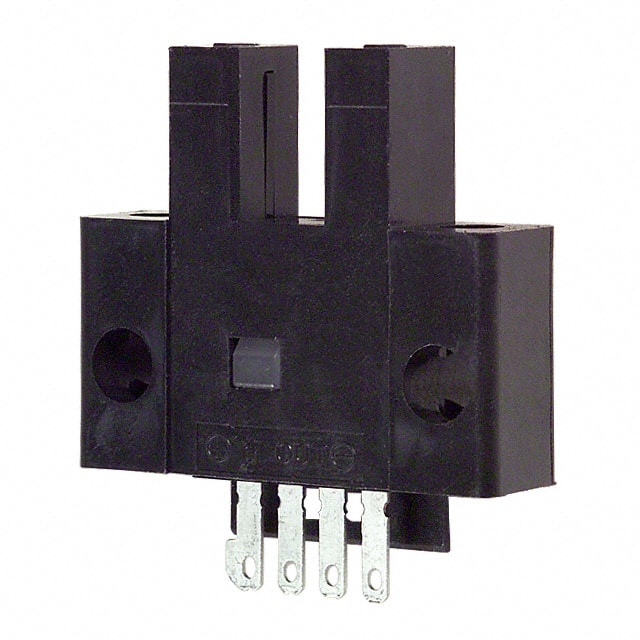EE-SX670A Encyclopedia Entry
Product Overview
The EE-SX670A belongs to the category of photoelectric sensors and is commonly used for detecting objects or changes in light intensity. This sensor is characterized by its compact size, high precision, and reliable performance. The package includes the sensor itself along with any necessary mounting hardware and connectors. Its essence lies in its ability to accurately detect the presence or absence of objects within its range. The packaging typically consists of individual units, and the quantity may vary based on the supplier.
Specifications
- Sensing Method: Transmissive
- Sensing Distance: 5mm
- Output Configuration: Phototransistor
- Operating Wavelength: 940nm
- Supply Voltage: 5V
- Response Time: 0.1ms
Detailed Pin Configuration
The EE-SX670A features a standard 4-pin configuration: 1. VCC (Supply Voltage) 2. GND (Ground) 3. Output 4. N/C (Not Connected)
Functional Features
- High sensitivity to light changes
- Compact design for easy integration
- Fast response time for real-time applications
Advantages and Disadvantages
Advantages
- Reliable detection of small objects
- Wide operating voltage range
- Compact and space-saving design
Disadvantages
- Limited sensing distance
- Susceptible to ambient light interference
Working Principles
The EE-SX670A operates based on the principle of light interruption. When an object passes between the emitter and receiver, it causes a change in light intensity, which is then detected by the sensor's phototransistor, resulting in a corresponding output signal.
Detailed Application Field Plans
The EE-SX670A is widely used in various industrial automation applications, including: - Conveyor belt systems for object detection - Packaging machinery for counting and sorting - Automated assembly lines for part verification
Detailed and Complete Alternative Models
- EE-SX671
- Similar specifications with enhanced ambient light immunity
- EE-SX672
- Longer sensing distance with a slightly larger form factor
- EE-SX673
- Higher output current capability for driving external loads
In conclusion, the EE-SX670A photoelectric sensor offers reliable and precise object detection capabilities in a compact and versatile package. Its application spans across diverse industrial sectors, making it a valuable component in automation and control systems.
Word count: 324
Senaraikan 10 soalan dan jawapan biasa yang berkaitan dengan aplikasi EE-SX670A dalam penyelesaian teknikal
What is the operating voltage range of EE-SX670A?
- The operating voltage range of EE-SX670A is 4.5V to 16V.
What is the typical output current of EE-SX670A?
- The typical output current of EE-SX670A is 50mA.
What is the response time of EE-SX670A?
- The response time of EE-SX670A is 1ms.
What is the operating temperature range of EE-SX670A?
- The operating temperature range of EE-SX670A is -25°C to 85°C.
Can EE-SX670A be used for object detection in industrial automation?
- Yes, EE-SX670A can be used for object detection in industrial automation due to its high sensitivity and fast response time.
Is EE-SX670A suitable for use in low light conditions?
- Yes, EE-SX670A is suitable for use in low light conditions due to its high sensitivity phototransistor.
What is the typical sensing distance of EE-SX670A?
- The typical sensing distance of EE-SX670A is 5mm.
Can EE-SX670A be used in conjunction with a microcontroller for automated systems?
- Yes, EE-SX670A can be easily interfaced with a microcontroller for use in automated systems.
Does EE-SX670A have built-in noise immunity for reliable operation in industrial environments?
- Yes, EE-SX670A is designed with built-in noise immunity for reliable operation in industrial environments.
What are the typical applications of EE-SX670A?
- Typical applications of EE-SX670A include paper detection in printers, edge detection in robotics, and position sensing in automated machinery.


